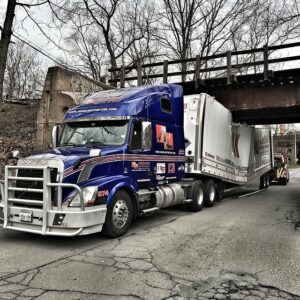
 Physical Damage Insurance
Physical Damage Insurance
Understanding physical damage insurance
Physical damage insurance is a type of coverage that protects your property from physical harm or loss caused by various perils. It provides financial support for repairs or replacements needed due to incidents like accidents, vandalism, fire, or natural disasters such as storms and earthquakes. This insurance is especially important for homeowners and vehicle owners who want to safeguard their investments.
By having physical damage insurance, you can have peace of mind knowing that you are protected against unexpected events that could cause significant financial strain. It provides a safety net that covers the costs associated with repairing or replacing your property so that you don’t have to bear the full burden yourself.
Understanding the terms and conditions of your physical damage insurance policy is crucial in order to ensure that you have adequate coverage and know what is included and excluded. It’s important to familiarize yourself with the specific details of your policy so that you know how it will protect you in various scenarios.
Types of physical damage insurance coverage
Physical damage insurance coverage comes in various types to cater to different types of property. One common type is auto physical damage insurance, which covers the repair or replacement costs for vehicles damaged in accidents, collisions, or theft. This includes comprehensive coverage for incidents like fire, vandalism, and natural disasters.
For homeowners, there is homeowners physical damage insurance that protects the structure and contents of their homes from perils such as fire, windstorms, and burglary. It also covers additional structures on the property like garages or sheds.
Business owners can opt for commercial property physical damage insurance to safeguard their buildings, equipment, inventory, and furnishings in case they are damaged by events such as fires, floods, or acts of vandalism.
In addition to these types of coverage, individuals may also consider specialized policies tailored to specific needs such as boat physical damage insurance or motorcycle physical damage insurance.
When selecting a policy, it’s essential to carefully review the coverage options available and ensure they align with your specific property type and risk factors.
Factors that affect physical damage insurance rates
Several factors can influence the rates of physical damage insurance. The first is the type of property being insured. For example, a luxury car may have higher insurance rates compared to a standard sedan due to the higher cost of repairs or replacement. Another factor is the location of the property. Areas prone to natural disasters or high crime rates typically have higher premiums.
The value and age of the property also play a role in determining insurance rates. Older properties may have more wear and tear, increasing the likelihood of damage and therefore resulting in higher rates. Additionally, the owner’s claims history and credit score can impact insurance costs. Insurance companies consider individuals with past claims as higher-risk policyholders.
Moreover, deductibles can affect insurance rates, with lower deductibles typically resulting in higher premiums. Lastly, coverage limits and additional endorsements chosen by the policyholder will also impact pricing. It’s important to consider these factors when selecting physical damage insurance to ensure adequate coverage at an affordable price.
What does physical damage insurance cover?
Physical damage insurance covers the costs of repairing or replacing property that has been damaged due to various circumstances. It typically applies to vehicles and properties such as homes, commercial buildings, or personal belongings. In the case of vehicles, physical damage insurance provides coverage for damages caused by accidents, collisions, vandalism, theft, fire, or natural disasters. For properties, it covers damages resulting from events like fires, storms, or burglary.
Specifically, physical damage insurance includes two main types of coverage: collision coverage and comprehensive coverage. Collision coverage pays for damages sustained in a collision with another vehicle or object. Comprehensive coverage covers non-collision related incidents such as theft, vandalism, falling objects, fire, or natural disasters.
However, it’s important to note that physical damage insurance does not cover regular wear and tear or mechanical breakdowns. To be fully protected against all potential risks and perils, it’s crucial to carefully review policy terms and consider additional endorsements if necessary.
How to choose the right physical damage insurance policy
When selecting a physical damage insurance policy, there are several factors to consider to ensure you choose the right one for your needs.
- Assess your risks: Evaluate the potential risks to your property or vehicle that you want to protect against, such as accidents, theft, or natural disasters. This assessment will help you determine the coverage options you need.
- Compare policies: Obtain quotes from multiple insurance providers and compare their coverage options, deductibles, and premiums. Look for policies that offer the specific coverage types (collision and comprehensive) that align with your needs.
- Consider limits and exclusions: Carefully review the policy’s limits of liability and any exclusions that may impact your coverage. Ensure that the policy adequately covers potential damages or losses based on your assessment of risks.
- Check for endorsements: Some insurance companies offer additional endorsements or optional coverages that can enhance your protection against specific risks or provide extra benefits. Consider these endorsements if they meet your requirements.
- Review customer feedback: Research customer reviews or seek recommendations to gauge the insurer’s reliability in handling claims promptly and efficiently.
By following these steps, you can make an informed decision when choosing a physical damage insurance policy that provides adequate protection for your property or vehicle.
Steps to file a physical damage insurance claim
To file a physical damage insurance claim, follow these steps:
- Document the damage: Take photos or videos of the damaged property or vehicle from multiple angles. This evidence will support your claim and help the insurance company assess the extent of the damage.
- Contact your insurance provider: Notify your insurance company as soon as possible after the incident. They will guide you through the claims process and provide the necessary forms to complete.
- Fill out the claim form: Provide accurate information on the claim form, including details of the incident, date and time of occurrence, and a description of the damage incurred.
- Submit supporting documents: Attach any additional documentation required by your insurer, such as police reports, accident reports, or repair estimates.
- Cooperate with investigations: If necessary, cooperate with any investigations conducted by your insurance company. This may involve providing statements or allowing access to inspect the damaged property.
- Follow up with your insurer: Stay in regular contact with your insurance provider regarding updates on your claim’s progress and any further requirements they may have.
By following these steps, you can ensure a smooth and efficient filing process for your physical damage insurance claim.
Tips for minimizing physical damage to your property
To minimize physical damage to your property, there are several key tips to keep in mind. First, ensure that your property is well-maintained. Regularly inspect and maintain the structural integrity of your buildings and address any issues promptly. This includes checking for leaks, cracks, or signs of wear and tear.
Second, implement safety measures such as installing fire alarms, smoke detectors, and sprinkler systems. These proactive steps can help mitigate the risk of extensive damage in the event of a fire or other emergencies.
Additionally, consider investing in security systems to deter theft and vandalism. Install sturdy doors and windows with robust locks to enhance the security of your premises.
It’s also crucial to stay informed about local weather conditions. Take preventive measures such as reinforcing roofs, trimming trees or branches near buildings, and securing outdoor equipment during storms or high winds.
Lastly, make sure you have appropriate insurance coverage for your property. Regularly review your policy to ensure it adequately covers potential risks and damages.
By following these tips, you can minimize physical damage to your property and protect your investment.
